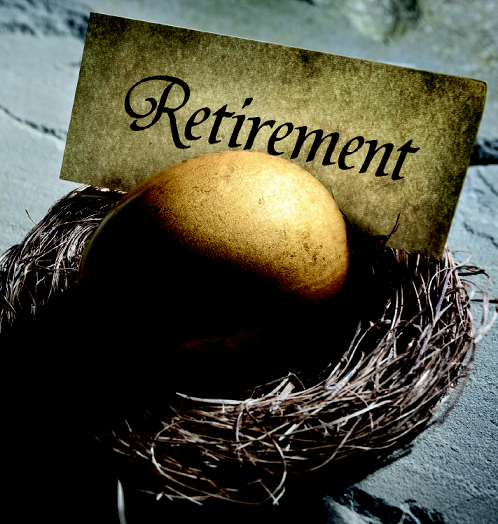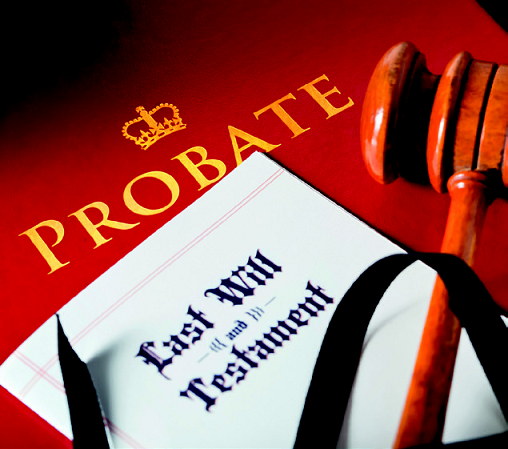Year End Tax Review 2023/24
Optional download pdf: Year End Tax Review 2023/24 →
Tax uncertainty in an election year
2023 has been a lot more stable, politically and economically, than 2022. Rather than the multiple fiscal events of the latter, there has been a single Budget plus an Autumn Statement. However, with a pre-election Budget due on 6th March, we wait to see whether there will be major changes announced for 2024/25, particularly tax cuts. Any such changes may affect end of year planning for 2023/24. For example, it may turn out to be advantageous to delay receiving income such as bonuses or dividends until next tax year, if they would be taxed at lower rates (perhaps because the government decides to unfreeze thresholds).
In this newsletter we set out what you need to know about the tax landscape (as currently known) over the next 12 months, but please check with us before finalising any big financial decisions, just in case the tax treatment has changed after publication.
Almost all the thresholds for both National Insurance Contributions (NICs) and income tax have been frozen until April 2028. With inflation still well above the 2% target, this freeze will pull a lot of earners into the higher tax bands as their salaries or business profits rise; this also has a knock-on effect on the amount of personal savings allowance (PSA) available to set against income such as interest, where rates have of course risen significantly in the last year or so. Income within the PSA is taxed at a nil rate.
Once into the 40% band, the PSA is cut from £1,000 to £500 per year; it disappears completely for anyone who pays income tax at 45%, which applies when income exceeds £125,140.
Individuals who are resident in Scotland pay income tax on earnings and profits at different rates.
The dividend allowance will be cut to £500 from 6 April 2024, having been £1,000 for 2023/24. This means more dividend income will be taxable each year, although the tax rates applicable to dividends are not changing in 2024/25.
The personal allowance has been frozen at £12,570 until April 2028; that allowance is tapered away by £1 for every £2 of income over £100,000 per year.
The annual exempt amount for capital gains tax will be halved from £6,000 to £3,000 in 2024/25.
The combination of the allowance cuts and threshold freezes will affect the tax and NICs payable by directors and shareholders of family companies.
All employers need to budget for increases in the rates of National Living Wage and National Minimum Wage from 1 April 2024.
We recommend you undertake an annual review of your financial affairs, in order to check that you are not paying more tax than you need to and to see whether any structures you set up in the past are still appropriate. Between now and the end of the tax year (5 April 2024) is a good time to assess whether you have claimed all the relevant allowances and are as well defended against high tax charges as you can be.
Of course, the personal circumstances of each individual must be taken into account in deciding whether any particular plan is suitable or advantageous, but these suggestions may give you some ideas. We are happy to discuss them with you in more detail.

TAX ON PERSONAL INCOME
Self-assessment key dates
Failure to notify chargeability to tax, to file your self-assessment tax return or pay any tax due on time may result in penalties. Key dates to be aware of over the next year are outlined below. Note how penalties increase with the lateness of the return.
31 January 2024
- Deadline for filing 2022/23 online returns and certain claims and elections.
- A £100 penalty will arise if your return is not filed by 31 January, regardless of whether any tax is due.
- A £100 penalty per partner applies for a late partnership return.
Paper returns for 2022/23 not filed by this date will be three months late and may attract a daily penalty of £10 a day for up to 90 days thereafter.
The balance of your 2022/23 tax liability, together with the first payment on account for 2023/24, is due.
2 March 2024
The first automatic 5% late payment penalty will apply to any outstanding 2022/23 tax.
5 April 2024
The four-year time limit for certain claims and elections in respect of the 2019/20 tax year expires.
30 April 2024
- Paper returns for 2022/23 not received by this date will now be six months late, so a further penalty may be charged of 5% of any tax due, or £300 if greater.
- Online tax returns for 2022/23 not filed by this date will be three months late and exposed to daily penalties of £10 a day for up to 90 days, to a maximum total of £900.
31 July 2024
- Due date for the second payment on account for 2023/24.
- Online returns for 2022/23 not filed by this date will now be six months late and a further penalty may be charged of 5% of the tax due, or £300 if greater.
1 August 2024
The second automatic 5% late payment penalty will apply to any outstanding 2022/23 tax.
5 October 2024
Deadline to notify HM Revenue & Customs (HMRC) of your chargeability to tax if you have not been issued with a return (or a notice to file a return) and you have income or capital gains to report for 2023/24.
31 October 2024
Deadline for submitting 2023/24 paper returns.
For paper returns filed by this date, HMRC should be able to:
- Calculate your tax for you;
- Tell you what you owe by 31 January 2025; and
- Collect tax through your tax code, where you owe less than £3,000.
If your paper return is submitted after this date, you will be charged an automatic £100 penalty.
Paper returns for 2022/23 not submitted by this date will now be 12 months late and subject to a further penalty of 5% of the tax due, or £300 if greater.
30 December 2024
Deadline for online filing for 2023/24 if you want HMRC to collect tax through your tax code (where you owe less than £3,000).
31 January 2025
Filing deadline for 2023/24 online returns. Payment date for balancing tax payment in respect of 2023/24 and first payment on account for 2024/25.
1 February 2025
The third automatic 5% late payment penalty will apply to any outstanding 2022/23 tax.
Time-To-Pay arrangement (TTP)
If you are struggling to pay your tax on time, you should be able to set up a TTP before the tax falls due. This will allow you to pay the tax by instalments and avoid penalties.
Please contact us if you need to set up a TTP – we can help!
Income tax
Tax thresholds
Currently, income tax rates and thresholds (except in Scotland) are set to remain unchanged for 2024/25. The Personal Allowance (PA), below which income is not taxed, is £12,570. The higher rate threshold at which 40% tax kicks in is £50,270 and top rate tax (45%) begins when income exceeds £125,140.
Scotland has different tax rates and bands for non-savings, nondividend income (e.g. employment income, business profits, rental income and pension income). In the recent Scottish Budget, the following were announced for 2024/25:
- There will be a new ‘advanced’ tax rate of 45% that will apply to income between £75,000 and £125,140.
- The top rate of tax applying to income above £125,140 will be increased to 48% (from 47%)
- The 19% starter, 20% basic, 21% intermediate and 42% higher rates will be unchanged.
- The starter and basic rate thresholds will be increased by inflation to £14,876 and £26,561 respectively.
- The higher rate threshold will be frozen at £43,662.
Many Scottish taxpayers will now pay a significantly higher amount of tax than those elsewhere in the UK (although some lower earners pay slightly less than in the rest of the UK).
Personal Allowance (PA)
The PA of £12,570 is progressively withdrawn for individuals earning more than £100,000, leading to a marginal rate of 60% on income between £100,000 and £125,140. This rate is different in Scotland and for those who have dividend income within this band.
Planning points
- Scottish taxpayers should consider bringing forward the payment of income to before 6 April 2024, before the big increases in tax rates for higher earners (see above).
- Consider taking action to reduce taxable income, particularly where income falls just above one of the thresholds. There are various options to achieve this, including pension contributions and Gift Aid donations.
- Income that can easily be moved from year to year includes:
- bonus from your own company
- dividends from your company
- encashments of life assurance bonds
- withdrawal of taxable income from pension schemes in ‘drawdown’.
- Income can also be moved between spouses, in order to make sure that PAs and lower rate tax bands are utilised. This is not always easy to do, but the following methods are permissible:
- make an outright gift of investments that produce taxable income
- put savings and investments into joint names and share the income
- employ the spouse or partner in the other person’s business
- take the spouse or partner into partnership in that business
- HMRC can challenge some of these methods if they think the transfer is not genuine. Always take tax advice to be sure that your plan will work.
- If you have children, it may be possible to switch income from one spouse to the other (as discussed above), so that both spouses’ incomes remain below the £50,000 threshold for the High-Income Child Benefit Charge (HICBC).
Will you get a full state pension?
If you are looking forward to retirement, it’s a good idea to check out how much state pension you will get. You can do this by logging on to your personal tax account on gov.uk, which contains lots of useful information about how much tax you owe and about your NICs record, among other things.
To receive the full amount of the state pension, your NICs record needs to contain 35 completed years. You need at least ten complete NICs years to receive any amount of the UK state retirement pension.
Planning points
- You can plug gaps in your NICs record by paying voluntary Class 3 NICs. This payment generally needs to be made within six years of the gap year. However, currently there is a dispensation that allows women born after 5 April 1953 and men born after 5 April 1951 to complete gaps in their NICs records right back to 6 April 2006. You can pay the voluntary NICs at the 2022/23 rate of £15.85 per week instead of the current rate of £17.45 per week. This opportunity to make up these old years with voluntary NICs payments closes on 5 April 2025.
- Self-employed traders who don’t have to pay Class 2 NICs because their profits are below £6,725 can choose to pay Class 2 voluntarily instead of Class 3; paying Class 2 NICs will be cheaper. For 2023/24, where profits are between £6,725 and £12,570, no Class 2 NICs are payable, but the trader still gets a NICs credit.
- You may also qualify for NICs credits for some years if you were claiming state benefits, Child Benefit or were a foster carer. The NICs credits were not always applied automatically, so it’s worth checking your own NICs record in your personal tax account.
Gift Aid
This is a valuable relief for gifts to charities: the gift is made out of the donor’s taxed income and the charity benefits by claiming basic rate tax on the value of the gift.
- Higher rate taxpayers can claim extra tax relief of 20% of the gross value of the gift.
- For top rate taxpayers, the extra relief is 25%.
- There is no cap on the amount that can qualify for Gift Aid, provided the donor has paid sufficient tax during the tax year to cover the charity’s reclaim from HMRC.
Example
If you are a higher rate taxpayer and you make an £800 donation to a charity, the gross value of the gift to the charity is £1,000, since it can claim back the basic rate tax of £200.
You can claim an additional 20% tax relief on the gross value, reducing the net cost to £600.
In order for a donation to qualify for tax relief, the charity previously had to be located in an EU member state (plus Iceland, Norway and Liechtenstein) and be recognised as a qualifying charity by HMRC. However, as part of the post-Brexit changes to tax legislation in the UK, this is now changing.
The ability to have a non-UK charity qualify has been removed. There is a transitional period though, so that a non-UK charity which had asserted its status before 15 March 2023 will continue to qualify until 1 April 2024 (for company donations) or 5 April 2024 (for individual donations). After that, no relief will be available where donations are made to non-UK charities. This will be the case even if those overseas charities have UK activities.
Note that UK charities that carry out work in other countries continue to qualify for tax reliefs such as Gift Aid.
Planning points
- You must provide the charity with a Gift Aid declaration, so that both parties can claim the relevant tax relief.
- You can elect for donations made in one tax year to be treated for tax purposes as made in the prior year.
- This would be of benefit, for example, if you are a higher or top rate taxpayer in 2022/23 but not in 2023/24; in other cases, it will merely accelerate the higher or top rate relief.
- The election can only be made when submitting your tax return, which must be filed on time.
- Donating assets (eg shares, land and property) to charity while you are alive can also attract income tax relief. Additionally:
- any gain arising on the donation of such assets is exempt from CGT; and
- the gift itself is not subject to Inheritance Tax (IHT), even if the donor dies within seven years.
If you are considering a gift to charity, we can make sure that it will meet the qualifying requirements. It will be particularly tax-efficient if the gross donation reduces income that would otherwise be subject to PA abatement or the HICBC.
Private pensions
Contributions within the annual allowance (AA) to pension funds attract relief at your marginal rate of tax. The combination of tax relief on contributions, tax-free growth within the fund and the ability to take a taxfree lump sum on retirement makes a pension plan an attractive savings vehicle. Saving for retirement should always be considered as part of the year-end tax planning process.
This is particularly important for those with an annual adjusted income in excess of £260,000, since the AA of £60,000 (pre-6 April 2023: £40,000) is usually tapered by £1 for every £2 of income in excess of £260,000 (pre-6 April 2023: £240,000), reducing to a minimum of £10,000 for those with income over £360,000. These last two figures were respectively £4,000 and £312,000 pre-6 April 2023. No tax relief is available for contributions exceeding the available AA.
The AA can be carried forward for three tax years to the extent it is unused. Any unused AA for the three previous years can be added to your allowance for 2023/24 and will attract full relief, subject to the level of your pensionable income (‘net relevant earnings’).
Planning points
- If you are approaching retirement and are considering drawing benefits, take advice from a properly authorised advisor, to ensure that you understand the tax and other implications of accessing your pension fund.
- The National Minimum Pension Age (NMPA) is currently 55. Those aged 55 or over can access their pension fund flexibly, with no restrictions on the amount they can withdraw, although amounts drawn above the permitted tax-free lump sum will be taxed as income as they are drawn.
- Consider making additional contributions to your pension scheme before the end of the tax year to obtain relief at 40% or 45%, depending on whether you are a higher rate or top rate taxpayer, taking care not to breach your available AA.
- Contributions are particularly tax-efficient where your income is between £100,000 and £125,140. Tax relief is available at 60% on income falling within this bracket; the relief is different in Scotland and where the income being relieved is dividend income.
- Review the availability of any unused allowance for the 2020/21 tax year, as this will expire on 5 April 2024.
- Consider making contributions of up to £2,880 to a pension scheme for a spouse or child if they have no earnings of their own, to obtain basic rate tax relief on the contributions. For example, if you contribute £2,880, HMRC will pay in £720, giving a gross contribution of £3,600.
- If you make pension contributions after taking more than the tax-free lump sum when flexibly accessing your pension savings, you will normally have a reduced AA for further contributions of £10,000. Make sure that you keep contributions below this level to avoid a charge.
- Unfortunately, pensions scams are very common. They can result in the loss of all or part of your pension pot, a penalty tax charge from HMRC, or both. Before committing to any changes to your pension fund, it is vital to take proper advice.
Abolition of the pensions Lifetime Allowance (LTA)
The LTA has, in recent years, been frozen at £1,073,100. It puts a cap on the amount of tax-advantaged pension rights that you can build up. The value of all your pension funds was compared with this limit at certain ‘benefit crystallisation events’, such as when you first draw benefits or reach age 75. An onerous tax charge (the ‘LTA charge’) was incurred on any surplus above the LTA.
- The lifetime allowance charge has been abolished for 2023/24 onwards.
- The tax-free pension commencement lump sum (PCLS) remains £268,275 (25% x £1,073,100) unless the member holds a higher level of protection from when the LTA had previously been cut.
Planning points
- For those with large pension pots, the abolition of the LTA charge may change
- the timing of your retirement; or
- the level of contributions you might want to make before retiring.
Example – Asif
Asif is aged 58. He is employed at a senior level in his company and receives an annual salary of £210,000 (plus bonuses). He has a pension pot worth £990,000 but has no form of LTA protection in place.
In March 2021, he opted out of payments into his company pension scheme, given that he was getting close to exceeding the LTA and was therefore facing an LTA charge.
He plans to retire in early 2024.
- In view of the removal of the LTA charge and the increase in the maximum AA, Asif can have further inputs to his employer’s scheme.
- So, carrying forward his two years’ worth of unused AA relief, he can have total pension inputs of up to £60,000 + £40,000 + £40,000 = £140,000 for 2023/24.
- Suppose it is now estimated that Asif’s pension fund will be worth about £1.2m when he retires.
- His lifetime allowance tax charge is zero, but if he had completed the same steps in 2022, the excess tax charge could have been as high as £70,000.
Example – Mona
Mona is aged 57 and has a personal pension scheme valued at £1.6m. She planned to retire at the age of 60, due to her pension fund being worth more than the LTA limit.
- Prior to 2023/24, Mona’s excess of £1,600,000 – £1,073,100 = £526,900 would have suffered an LTA charge:
- If taken as a lump sum, this would have been 55% when she accessed it.
- This would have reduced the value of her pension fund by 55% x £526,900 = £289,795, i.e. to £1,310,205.
- The additional funds mean that she can retire immediately, enjoying a higher level of pension income than she had previously anticipated.
If there is a change in Government, it is almost certain that the Lifetime Allowance will be reinstated (although not retrospectively). What level it would be set at is currently unknown.
This emphasises the importance, especially for those nearing retirement age, of taking action sooner rather than later.
Inheritance Tax (IHT)
Domicile status is a difficult legal concept and is very important for IHT. Broadly, it means one’s country of ‘natural or permanent home’.
- Individuals who are domiciled (or deemed domiciled) in the UK are subject to IHT on their worldwide assets.
- The main category of ‘deemed domicile’ is those who have been UK resident for at least 15 of the last 20 years.
- In contrast, non-UK domiciled individuals (‘non-doms’) are normally subject to IHT on their UK assets only.
IHT is payable at 40% where a person’s assets on death, together with any gifts made during the seven preceding years, total more than the nil rate band (NRB). The NRB is £325,000 for 2023/24 and is fixed at this level until April 2028.
Unused NRB can be transferred to a spouse or civil partner, so couples can enjoy a combined NRB of up to £650,000 on the second death. The amount transferable is the percentage of the deceased’s unused NRB at the time of their death, as applied to the NRB in force at the date of the second death.
In addition, a ‘residence NRB’ is available in respect of a property that at some point has been the deceased’s main residence and which is passed on death to a direct descendant (or their spouse).
- For 2023/24, the residence NRB is £175,000 and is fixed at this level until April 2028.
- If unused, this relief will also be transferable to the deceased’s spouse or civil partner.
- The relief will be tapered where estates are over £2 million in size (before reliefs and exemptions), such that estates over £2.35m receive no benefit from the additional nil rate band.
- If an estate does not qualify for a full residence NRB, it may be entitled to a further relief known as a ‘downsizing addition’ if three conditions apply:
- The deceased disposed of a home on or after 8 July 2015 and either downsized to a less valuable property or ceased to own a home;
- The former home would have qualified for the residence NRB if it had been retained; and
- At least some of the deceased’s estate is inherited by his or her direct descendants or their spouses.
Planning points
- Consider gifting assets during your lifetime to minimise the IHT payable on your death.
- Such gifts will fall outside the IHT net after seven years, provided you do not reserve a benefit in the asset transferred.
- After three years, the amount of IHT potentially payable on the gift (should you die within seven years of making it) is reduced, based on how long you survive.
- The gifting of assets can give rise to CGT liabilities, but some assets are exempt CGT (e.g. cash and gilts).
- If you have income surplus to your normal living expenses, consider making use of the IHT exemption for regular gifts out of surplus income.
- Such gifts are tax-free, even where death occurs within seven years.
- Appropriate documentation should be retained to show that the gift is regular and made from income not required by the donor to cover their living expenses.
- Make use of other IHT reliefs and exemptions
- The annual exemption of £3,000 (£6,000 if no gifts were made during 2022/23);
- The small gifts exemption of £250 per donee p.a.; and
- Gifts made in consideration of marriage (£5,000 to children, £2,500 to grandchildren, and £1,000 to anyone else).
- Consider taking out life insurance to fund any contingent exposure to IHT, although the availability and cost will depend on the transferor’s life expectancy.
- Consider increasing bequests to charities to 10% or more of your net estate, which will mean that a reduced IHT rate of 36% applies to the remainder of your estate.
- If you sell your home (e.g. to move into care) or downsize, keep records of the transactions, so that on your death the downsizing addition may be claimed if you leave sufficient assets to direct descendants or their spouses.
Most importantly of all, make sure you have an up-to-date will, that is not only efficient from an IHT perspective but also distributes your assets based on your current family circumstances. For example, trusts that were due to be set up in your will while your children were minors may no longer be needed.
CAPITAL TAXES
Property owners
Letting property
- Profits from a rental business are subject to income tax at your marginal rate of tax.
- Expenses incurred wholly and exclusively in connection with the rental business are deductible when calculating net taxable profits, provided they are not capital in nature.
- However, there is a restriction on deductions for finance costs relating to residential lettings.
- Capital expenditure is usually deductible against any capital gain on an eventual disposal of the property.
- The rules for determining whether an expense is capital or revenue in nature for tax purposes are not always straightforward, particularly in relation to repairs and maintenance.
- Capital allowances (CAs) are available on qualifying expenditure on commercial property, but not in respect of residential property; instead, the actual cost of renewing existing furnishings can be taken as a revenue deduction.
- The Rent-a-Room Scheme provides tax relief of £7,500 per year where an individual rents out a room in their only or main residence.
- There is also a £1,000 property allowance, allowing individuals to receive small amounts of rental income tax-free. An example would be receiving a few hundred pounds of income for renting out a parking space on your driveway.
Planning points
- The default position for an unincorporated property business with a turnover of up to £150,000 is to calculate taxable profits on the ‘cash’ basis (i.e. looking at the cash received and paid during the tax year).
- If you wish to elect out of the cash basis, you have until one year after the relevant self-assessment filing date to make the election (e.g. elections for 2022/23 will need to be made by 31 January 2025). Your taxable profits will then be calculated by matching income and expenditure to the period to which they relate, irrespective of the cash movements.
- Ensure that any losses are claimed, so that they can be carried forward and offset against future profits from the same rental business.
- If you let a furnished room in your home to a lodger and your gross rental income exceeds £7,500 for the year, calculate whether it is more tax efficient
- for the excess to be charged to tax; or
- for you to pay tax on your rental profits after deduction of expenses in the usual way (with no £7,500 allowance).
- You can use whichever method produces the lowest tax liability.
Principal Private Residence (PPR) Relief
- PRR relief reduces the gain on the sale of your main home, usually to nil, thus avoiding a charge to CGT. The relief applies for the time that the property is occupied as your main home, plus the final 9 months of ownership, which is extended to 36 months for
- disabled people or their spouses; or
- individuals or their spouses moving into a care home.
- Other periods of absence from the property may qualify for PPR relief as deemed occupation (e.g. if going to work full-time abroad).
- You need to show that you have occupied the property with the intention of living there as a ‘home’ with a degree of permanence.
- If you own more than one property that you actually use as a home (as opposed to always renting out), you may be able to make a PRR election, stating which property is your main home for CGT purposes.
- For UK residents, such an election must normally be submitted within two years of an additional property being available for occupation as a residence.
Planning points
- HMRC often challenge the availability of PPR relief on a property, particularly where it is a partial claim for a property that was once lived in for some of the period of ownership. Make sure you have enough evidence to show that you lived there (e.g. utility bills, council tax statements or having notified the DVLC that you lived there).
- Couples should consider jointly owning property for which no PPR election can be made, to benefit from two annual exempt amounts and (possibly) lower rates of CGT when the property is sold.
- If a residential property is not fully covered by PPR relief when sold and a tax liability arises, a CGT property return has to be filed within 60 days and the CGT on the disposal paid by that date. This is a very tight deadline. To make sure it can be met, it is sensible to make sure that you have a record of all costs you have incurred on the property and all documentation (as discussed above) to back up any PPR relief claim. This will enable the taxable gain to be calculated in time to make the 60-day payment.
- Where non-residents dispose of UK land and buildings, a 60-day report is needed even if the disposal generates a loss.
Furnished Holiday Lettings
A property that qualifies as a Furnished Holiday Letting (FHL) can benefit from various tax reliefs not generally available to property rental businesses.
- Capital allowances can be claimed for expenditure on furniture, fittings and equipment, including immediate relief on qualifying expenditure of up to £1 million under the Annual Investment Allowance (AIA).
- For CGT purposes, the disposal of an FHL is treated as the disposal of a business asset and can be ‘rolled over’ against the acquisition of replacement assets, or perhaps benefit from Business Asset Disposal Relief (BADR), which would give a 10% CGT rate on the whole gain.
- Allowable expenses (including finance costs) can be offset against the gross rental income when calculating the net taxable profits.
- Losses can only be carried forward against FHL profits in future years, not set against other rental income.
To qualify as an FHL, the property must be furnished, located in the UK or another EEA country, and let on a commercial basis with a view to realising profits.
It must also satisfy the following tests:
- The property must be available for letting to the public (not family or friends) for at least 210 days per tax year.
- The property must actually be let to the public for 105 days or more per tax year, excluding periods of continuous occupation by the same person for more than 31 days.
- The property must not normally be let for periods of long-term occupation totalling more than 155 days per tax year. A period of long-term occupation is one where the property is let to the same person for more than 31 days.
Planning points
- If your FHL property is not let for the requisite 105 days in 2023/24, but satisfies the other conditions, you may still be able to secure the tax reliefs available by electing for a ‘grace period’ to apply. This is possible if all the conditions were met in the previous year (2022/23).
- Consider making an averaging election where you have more than one FHL property and one property does not meet the occupancy test of 105 days on its own. Where the average occupancy of all the FHL properties is above 105 days, all properties will qualify.
- Check whether any capital expenditure qualifies for the AIA.
Capital Gains Tax
The annual exempt amount (AEA) is £6,000 for 2023/24, but is reducing to £3,000 in 2024/25. Gains above this level are taxed as follows:
- 10% if the gains qualify for Business Asset Disposal Relief (BADR), up to a lifetime limit of £1 million of qualifying gains;
- 10% if the gains qualify for Investors’ Relief, up to a lifetime limit of £10 million;
- 10% (18% for gains in respect of residential property or private equity carried interest) if the gains fall within any unused basic rate band; and
- 20% (28% on residential property or private equity carried interest) for gains above the basic rate band.
Assets transferred between married couples or civil partners do not normally give rise to a CGT charge; instead, the recipient takes over the CGT cost of the donor. This means that, when the asset is eventually sold by the recipient, the gain or loss will reflect the combined ownership period.
Gifts to other family members will produce capital gains or losses, using the market value at the time of the gift as deemed proceeds. However, where the asset is a qualifying business asset (e.g. unquoted trading company shares), a joint ‘holdover relief’ election will enable any gain to be deferred.
Non-residents are not generally subject to UK CGT. There is an exception to this rule, however, for disposals of UK immoveable property (i.e. land and buildings) and certain indirect interests in UK immoveable property.
Planning points
- The AEA cannot be carried forward or transferred to a spouse, so where possible aim to make disposals before 6 April 2024 to utilise this year’s AEA, particularly as the amount of the exemption will decrease from this date.
- Consider transferring assets (wholly or partly) to your spouse or civil partner, to utilise their AEA or capital losses on a subsequent disposal. Such transfers must be made outright and without preconditions to be effective for tax purposes.
- Consider carefully when you will make any disposal, as the timing of a disposal will determine when any CGT is due and may affect the amount of CGT payable.
Example – David
David is a basic rate taxpayer (with £7,000 of basic rate band unused) in 2023/24 but expects to be a higher rate taxpayer in 2024/25. His sole disposal in 2023/24 of some nonresidential land realises a capital gain of £15,000.
- His taxable gain (i.e. after AEA) is £9,000 and his CGT liability will be £1,100 [(£7,000 @ 10%) plus (£2,000 @ 20%)].
- This would be payable on 31 January 2025.
If, instead, the disposal is made in 2024/25:
- His taxable gain (i.e. after AEA) is £12,000 and his CGT liability will be fully at 20%, i.e. £2,400.
- This would be payable on 31 January 2026.
BUSINESS TAXES
Sole traders
Change in basis of assessment
Tax year 2023/24 is the transition year from the ‘current year’ basis of assessment (which charges tax on the 12-month accounting period ending in the tax year) to the ‘tax year’ basis of assessment, which will tax the profits actually arising in the tax year. Only businesses that already have a year end between 31 March and 5 April will be unaffected by the changes.
Under the transition year rules:
- Up to 23 months’ worth of profits will be taxable in 2023/24, with overlap profit (which usually arises on commencement of trade) being set off against the additional months’ profits.
- The extra profits will be spread over five years, to avoid a large additional tax charge arising in one year.
- The taxpayer may choose to advance the spread profits into an earlier year if it is beneficial to them (e.g. to use up basic rate band) by election on their tax return.
- If businesses do not currently have an accounting date between 31 March and 5 April, they may choose to change their accounting date ahead of the changes, to make calculating taxable profit each year easier.
- If they choose not to, they will need to file their return every year using partly provisional figures and, when the final figures are available, amend the return (ususally when the following year’s tax return is filed.)
Losses
- Losses made by an unincorporated business for tax year 2023/24 can be offset against your other income of that year and/or the previous 12 months, subject to a maximum of £50,000 or 25% of your total income for the year, whichever is greater.
- An exception is that any losses generated by the offset of overlap profits can be carried back 3 years.
- Unused losses can be carried forward against future profits of the same trade with no limit.
- Further options may be available to obtain relief for losses in the early years of a business, or on its cessation.
Planning points
- Employing a spouse or child might allow them to utilise their personal allowance and provide a NICs record for state pension purposes. The level of salary paid must be commensurate with the duties performed and must meet National Minimum Wage requirements.
- Pension contributions can also be made on behalf of a spouse or child whom you employ, to save tax and NICs. Any contributions made should be reasonable in relation to their working hours and salary.
- Note that the above two points are equally applicable for companies.
- If you are changing accounting date, discuss with us the optimum way of doing this (i.e. one long period of account or two separate periods), as the tax outcomes can be very different.
- Consider carefully the timing of any capital expenditure during 2024
Capital expenditure
Capital allowances can be claimed on expenditure on certain types of assets used in your business. You must be careful to distinguish between
- ‘plant and machinery’ (P&M), which includes many fixtures and fittings (such as desks or chairs for an office); and
- structures and buildings.
The latter attract much slower tax relief.
The rules on capital allowances can be quite nuanced and there are lots of cases where the taxpayer does not get the tax relief they were expecting, so please check the likely tax treatment with us before undertaking any major expenditure. However, we explain below some of the key points of which you should be aware.
P&M allowances
- The Annual Investment Allowance (AIA) is a particularly valuable relief for businesses. 100% relief is given for expenditure on most types of P&M, up to a limit of £1m p.a. Apparently, 99% of businesses have annual P&M expenditure below this figure.
- Cars (with a few exceptions, such as dual control driving school vehicles) are not eligible for the AIA (or the FYAs mentioned below).
- Any other expenditure eligible for capital allowances generally attracts an annual capital allowance of 18% or 6% (depending on the nature of the expenditure) on a reducing balance basis (i.e. the rate is applied to the balance of unrelieved expenditure each year, rather than full cost).
- For expenditure on new, unused P&M by companies, there is now a First-year Allowance (FYA) of either 100% (‘full expensing’) or 50%, depending on the type of P&M bought.
- Most businesses will be better off claiming the AIA though, as:
- It is available on second-hand plant;
- It is available to unincorporated businesses, not just companies (although certain businesses cannot claim the AIA, including partnerships with a corporate member); and
- Unlike the new FYAs (and the 130% super-deduction that was available from 1 April 2021 to 31 March 2023 for companies buying new, unused P&M), there are no special rules that apply when the asset is eventually disposed of.
Structures and buildings
- Structures & Buildings Allowance (SBA) can provide relief for expenditure on non-residential buildings (including new conversions and renovations).
- Relief is normally given at a flat rate over 331/3 years at 3% per annum of qualifying cost (which will always exclude the cost of land).
- Garden offices used purely for business purposes will NOT qualify as they are built on residential property.
- If the business is in one of the government’s designated Freeport or Investment Zone sites, the SBA rate is 10% p.a.; various other tax advantages also apply to businesses in such sites.
Planning points
- To accelerate tax relief, consider purchasing new assets
- just before the end of your accounting period (companies); or;
- before the end of the tax year (unincorporated businesses).
- Consider the timing of the disposal of cars and other equipment on which allowances have been claimed. Such disposals will impact the taxable profits for the period in which they take place.
- If your company previously claimed super-deduction, make sure that any disposal proceeds of that asset are separately identified; they will be treated as taxable profits of your company in the period of disposal.
- If you are intending to purchase commercial property, including Furnished Holiday Lettings (FHLs) containing fixtures that are P&M, seek advice to ensure that the maximum capital allowances can be claimed. On purchase, any value attributed to the fixtures must be agreed by a joint election between the seller and the purchaser.
Benefits-in-kind
In some cases, an employee can avoid being taxed on a benefit if they ‘make good’ the value of the benefit by reimbursing their employer. There are strict time limits for doing this.
All reimbursements of taxable non-payrolled benefits for 2023/24 must be made by 6 July 2024, which aligns with the date for submitting the P11D forms.
The dates for making good on payrolled benefits provided in 2023/24 are:
- 1 June 2024 for the value of vehicle fuel used
- 5 April 2024 for all other benefits.
The deadlines for making good do not apply to interest payable on beneficial loans and overdrawn directors’ loan accounts. Where such loans exceed £10,000 at any point in the tax year there is a taxable benefit if insufficient interest is paid. This benefit takes account of the loans outstanding throughout the year, not just the days when the balance was above £10,000.
This taxable benefit can be avoided if interest at least equal to the Official Rate is reimbursed, as long as the borrower is legally obliged to pay interest. The Official Rate for 2023/24 is 2.25% p.a.
Despite this exclusion from the reimbursement deadlines, most people should try to pay any interest due on a loan by the 6 July following the tax year, to avoid any doubt as to whether a benefit arises at the time the P11D form is being prepared.
Don’t miss the deadline for ‘making good’ any benefits you have received, if you want to avoid a tax charge.
This newsletter is written for the benefit of our clients. Further Advice should be obtained before any action is taken.








